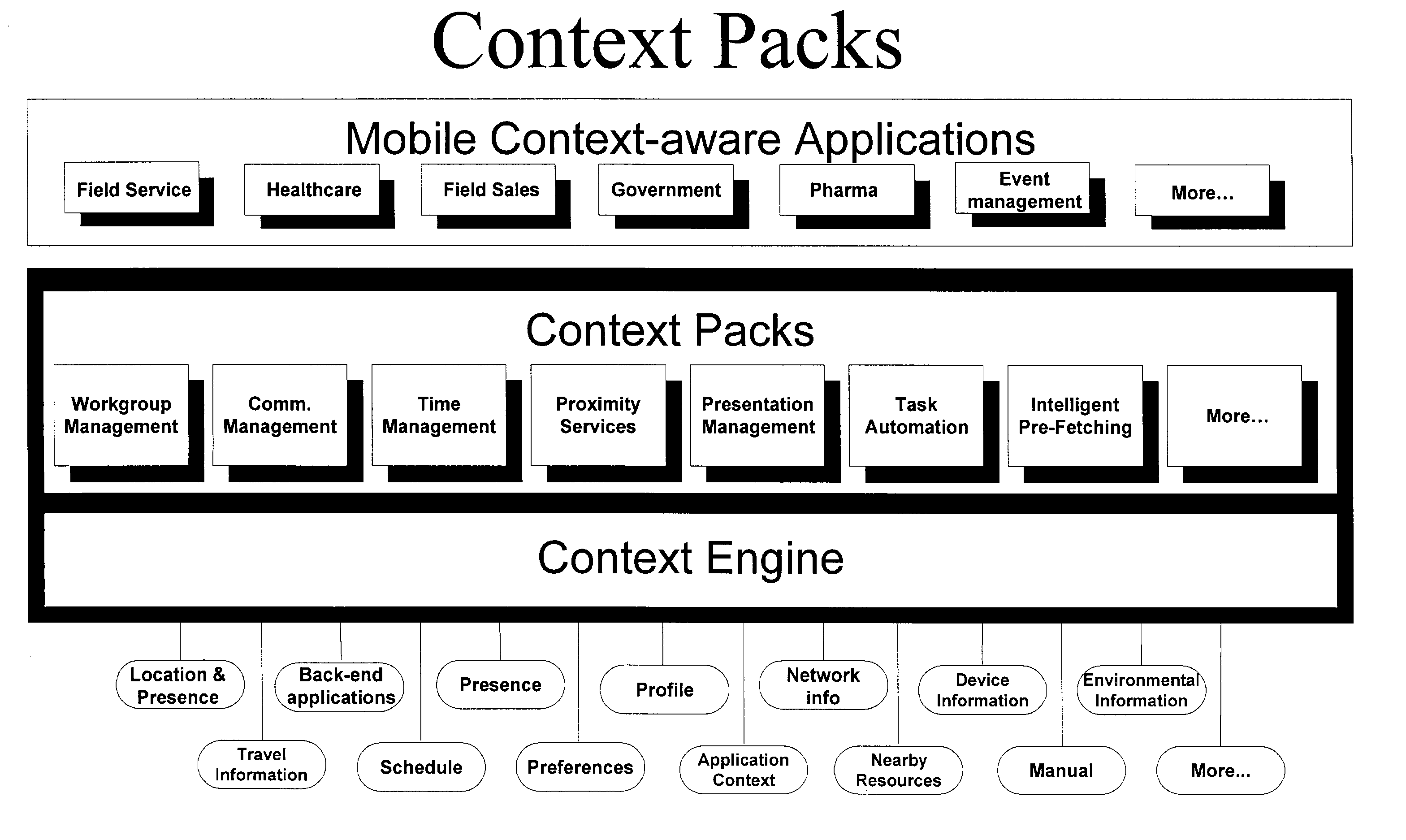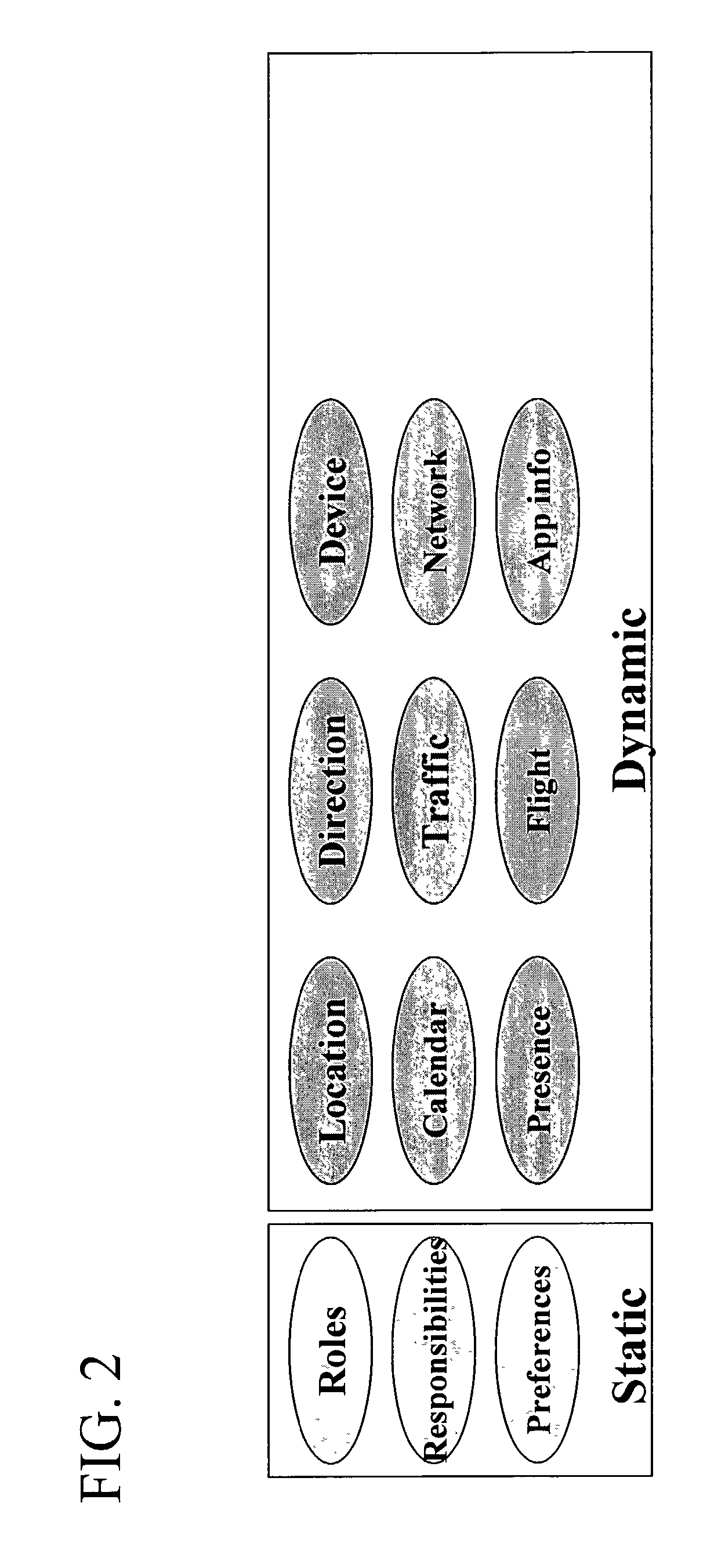Method and system for providing context awareness
a context awareness and information technology, applied in the field of context awareness methods and systems, can solve the problems of complex and cumbersome context awareness application development, inability to consider changes in john doe's environment, and inability to develop context aware applications
- Summary
- Abstract
- Description
- Claims
- Application Information
AI Technical Summary
Benefits of technology
Problems solved by technology
Method used
Image
Examples
Embodiment Construction
Context Pack Architecture
[0261] A more detailed description of an example Context Pack Architecture (also referred to herein as "Context Pack") will now be provided, in accordance with an embodiment of the present invention.
[0262] The Context Pack provides a framework to develop a context-aware application. In an embodiment of the present invention, the Context Pack provides access to a user's context that is affected by location, schedule, and state, and also allows management of the effect of the context of other users on the user's context. In an embodiment of the present invention, the Context Server provides the underlying Context framework, and the user's context is accessed through queries and events. The data needed to determine context is provided by external data sources through sensors. The Context Pack provides a framework to plug in various data sources into the sensors. The interpreters interpret the data and changes to a context are reported through subscribed events....
PUM
 Login to View More
Login to View More Abstract
Description
Claims
Application Information
 Login to View More
Login to View More - R&D
- Intellectual Property
- Life Sciences
- Materials
- Tech Scout
- Unparalleled Data Quality
- Higher Quality Content
- 60% Fewer Hallucinations
Browse by: Latest US Patents, China's latest patents, Technical Efficacy Thesaurus, Application Domain, Technology Topic, Popular Technical Reports.
© 2025 PatSnap. All rights reserved.Legal|Privacy policy|Modern Slavery Act Transparency Statement|Sitemap|About US| Contact US: help@patsnap.com



